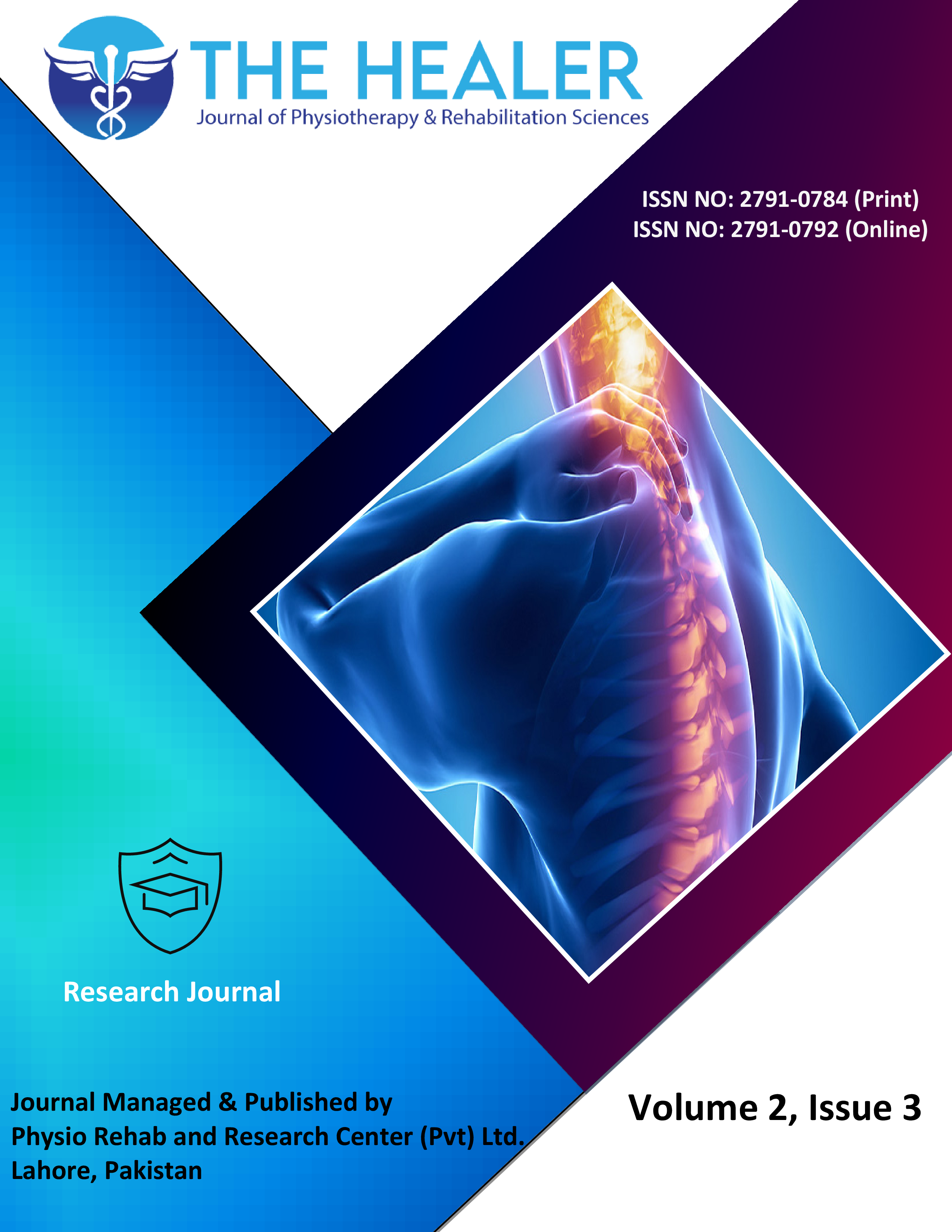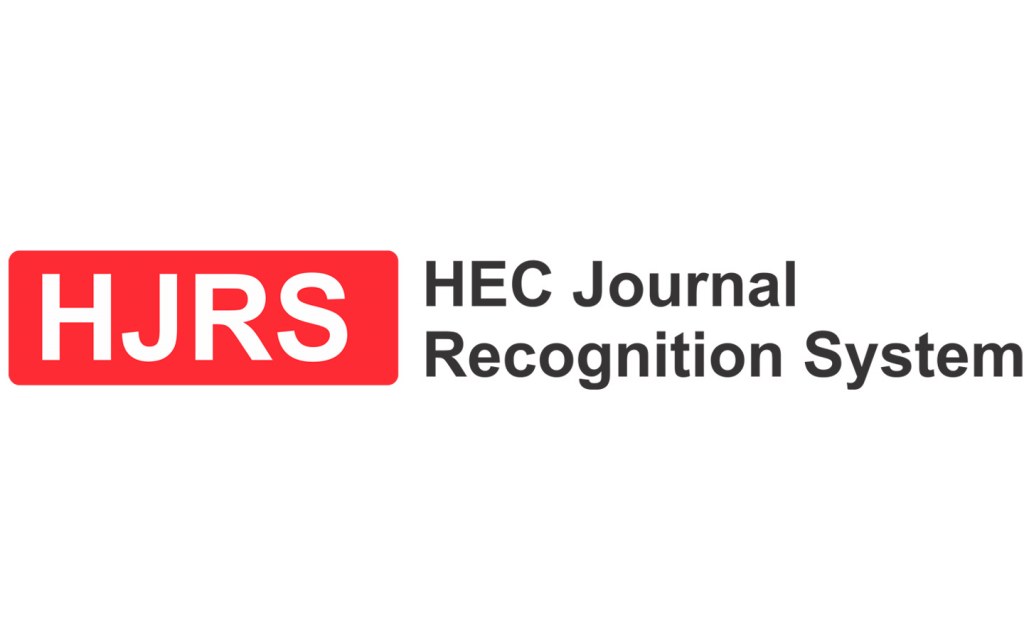Medicinal Plants: An Insight into Wound Healing
Medicinal Plants & Wound Healing
DOI:
https://doi.org/10.55735/hjprs.v2i3.96Keywords:
herbal ointments , medicinal plants, wound healingAbstract
Medicinal plants have been used for centuries to treat trauma, infection, sickness, and injury as these are affordable, easy to access and have fewer side effects than commercial pharmaceuticals. Recent research has shown that several medicinal plants can treat wounds using in vivo and in vitro pre-clinical models of wound recovery. Furthermore, the mechanisms by which these medicinal plants enhance wound therapy have also been revealed. Medicinal herbs have been shown in research to have the ability to have an antioxidant effect, to promote angiogenesis, to activate NF-B, to favor specific pro-inflammatory cytokines, to boost the appearance of iNOS and α-1 type-1 collagen, and to favor certain pro-inflammatory cytokines. All these effects can be brought about by medicinal herbs. Considering this, throughout this evaluation, an effort was made to provide a glimpse into freshly discovered medicinal plants that have wound recovery mechanisms and may be effective in the treatment and the invention of new wound-healing pharmaceuticals. Herbal medicines involve disinfection, debridement, and creating a healing environment. The purpose of the study was to review and gather the evidence related to the use of medicinal plants in wound healing. The use of herbal remedies is found to be both affordable and effective, mainly when used in conjunction with wound healing, bacterial activity and reducing oxidative stress in animals. During this evaluation, the cellular processes of recently discovered medicinal plants with a capacity for wound healing were brought to light. These mechanisms can potentially be helpful in therapeutic practice and the advancement of innovative medications for treating wounds. Several factors can delay the wound-healing process such as anemia, diabetes, nutritional deficiency, hematoma, local infections, etc. In the treatment of wounds, many medicinal plants and other herbal immunomodulators are considered useful. Through different pathways, these herbal ointments promote healing and regeneration of the lost tissues without producing side effects.
References
Kumar B, Vijayakumar M, Govindarajan R, Pushpangadan P. Ethnopharmacological approaches to wound healing—exploring medicinal plants of India. Journal of Ethnopharmacology. 2007;114(2):103-13. https://doi.org/10.1016/j.jep.2007.08.010
Chan EWC, Lim YY, Wong L, Lianto FS, Wong S, Lim K, et al. Antioxidant and tyrosinase inhibition properties of leaves and rhizomes of ginger species. Food chemistry. 2008;109(3):477-83. https://doi.org/10.1016/j.foodchem.2008.02.016
Agyare C, Boakye YD, Bekoe EO, Hensel A, Dapaah SO, Appiah T. African medicinal plants with wound healing properties. Journal of Ethnopharmacology. 2016;177:85-100. https://doi.org/10.1016/j.jep.2015.11.008
Ekor M. The growing use of herbal medicines: issues relating to adverse reactions and challenges in monitoring safety. Frontiers in pharmacology. 2014;4:177. https://doi.org/10.3389/fphar.2013.00177
Maver T, Kurečič M, Smrke DM, Kleinschek KS, Maver U. Plant-derived medicines with potential use in wound treatment. Herbal Med. 2018.
Shen H-M, Chen C, Jiang J-Y, Zheng Y-L, Cai W-F, Wang B, et al. The N-butyl alcohol extract from Hibiscus rosa-sinensis L. flowers enhances healing potential on rat excisional wounds. Journal of Ethnopharmacology. 2017;198:291-301. https://doi.org/10.1016/j.jep.2017.01.016
Mirmalek SA, Parsa T, Parsa Y, Damavandi SY, Salimi-Tabatabaee SA, Jangholi E, et al. The wound healing effect of Iris forentina on full thickness excisional skin wounds: A histomorphometrical study. ||| Bangladesh Journal of Pharmacology. 2016;11(1):86-90. https://doi.org/10.3329/bjp.v11i1.23906
Nicolaus C, Junghanns S, Hartmann A, Murillo R, Ganzera M, Merfort I. In vitro studies to evaluate the wound healing properties of Calendula officinalis extracts. Journal of Ethnopharmacology. 2017;196:94-103. https://doi.org/10.1016/j.jep.2016.12.006
Joshi A, Joshi VK, Pandey D, Hemalatha S. Systematic investigation of ethanolic extract from Leea macrophylla: implications in wound healing. Journal of ethnopharmacology. 2016;191:95-106. https://doi.org/10.1016/j.jep.2016.06.034
Pereira LdP, Mota MR, Brizeno LA, Nogueira FC, Ferreira EG, Pereira MG, et al. Modulator effect of a polysaccharide-rich extract from Caesalpinia ferrea stem barks in rat cutaneous wound healing: Role of TNF-α, IL-1β, NO, TGF-β. Journal of Ethnopharmacology. 2016;187:213-23. https://doi.org/10.1016/j.jep.2016.04.043
Krishnappa P, Venkatarangaiah K, Rajanna SKS, Balan RK. Wound healing activity of Delonix elata stem bark extract and its isolated constituent quercetin-3-rhamnopyranosyl-(1-6) glucopyranoside in rats. Journal of pharmaceutical analysis. 2016;6(6):389-95. https://doi.org/10.1016/j.jpha.2016.05.001
Li J, Chen J, Kirsner R. Pathophysiology of acute wound healing. Clinics in dermatology. 2007;25(1):9-18. https://doi.org/10.1016/j.clindermatol.2006.09.007
Guo Sa, DiPietro LA. Factors affecting wound healing. Journal of dental research. 2010;89(3):219-29. https://doi.org/10.1177/0022034509359125
Ekpo DE, Joshua PE, Odiba AS, Nwodo OFC. Flavonoid-rich fraction of Lasianthera africana leaves alleviates hepatotoxicity induced by carbon tetrachloride in Wistar rats. Drug and Chemical Toxicology. 2021:1-17. https://doi.org/10.1080/01480545.2021.1892957
Sidik K, Mahmood A, Salmah I. Acceleration of wound healing by aqueous extract of Allium sativum in combination with honey on cutaneous wound healing in rats. Int j mol med adv sci. 2006;2:231-5.
Sathiya M, Muthuchelian K. Investigation of Phytochemical Profile and Antibacterial Potential of Ethanolic Leaf Extract of Prosopis juliflora DC. Ethnobotanical leaflets. 2008;2008(1):167.
Yesmin MN, Uddin SN, Mubassara S, Akond MA. Antioxidant and antibacterial activities of Calotropis procera Linn. American-Eurasian Journal of Agricultural & Environmental Sciences. 2008;4(5):550-3.
Singh A, Nenavathu BP, Mohsin M. Facile synthesis of Te-doped ZnO nanoparticles and their morphology-dependent antibacterial studies. Chemical Papers. 2021;75(8):4317-26. https://doi.org/10.1007/s11696-021-01654-3
Adhikari SP, Pant HR, Kim HJ, Park CH, Kim CS. Deposition of ZnO flowers on the surface of g-C3N4 sheets via hydrothermal process. Ceramics International. 2015;41(10):12923-9. https://doi.org/10.1016/j.ceramint.2015.06.134
Londhe V, Gavasane A, Nipate S, Bandawane D, Chaudhari P. Role of garlic (Allium sativum) in various diseases: An overview. angiogenesis. 2011;12:13.
Sharma A, Khanna S, Kaur G, Singh I. Medicinal plants and their components for wound healing applications. Future Journal of Pharmaceutical Sciences. 2021;7(1):1-13. https://doi.org/10.1186/s43094-021-00202-w
Mauti GO, Mauti EM, Ouno GA, Maronga B. Antibacterial activity of Garlic, Tulsi, Bitter guard and Cinnamon extracts against wound pathogens. 2015.
Dewi Timotius IC, Puradisastra S, Tiono H. Effect of Garlic Tuber Juice (Allium Sativum L.) in Wound Healing Shorten the Duration of Swiss Webster Mice. Jurnal Medika Planta.2(1):247025.
Aderounmua A, Omonisib A, Akingbasotec J, Makanjuolad M, Bejide R, Orafidiya L, et al. Wound-healing and potential anti-keloidal properties of the latex of Calotropis procera (Aiton) Asclepiadaceae in rabbits. African Journal of Traditional, Complementary and Alternative Medicines. 2013;10(3):574-9. https://doi.org/10.4314/ajtcam.v10i3.28
Tsala DE, Nga N, Thiery BNM, Bienvenue MT, Theophile D. Evaluation of the antioxidant activity and the healing action of the ethanol extract of Calotropis procera bark against surgical wounds. Journal of intercultural ethnopharmacology. 2015;4(1):64. https://doi.org/10.5455%2Fjice.20141211071136
Farahpour MR, Hesaraki S, Faraji D, Zeinalpour R, Aghaei M. Hydroethanolic Allium sativum extract accelerates excision wound healing: evidence for roles of mast-cell infiltration and intracytoplasmic carbohydrate ratio. Brazilian Journal of Pharmaceutical Sciences. 2017;53. https://doi.org/10.1590/s2175-97902017000115079
Khan IA, Lodhi AH, Munawar SH, Manzoor A, Raza MA. Formulation and evaluation of allicin and curcumin gel improves normal and diabetic ulcers in rabbits. Latin American Journal of Pharmacy. 2018;37(8):1602-7.
Alawdi SH, Shehab M, Al-Mekhlafi AG. Formulation of herbal gel preparations from medicinal plants and evaluation of their wound healing activities. Saudi J Biomed Res. 2019;4(8):279-84.
Ullah F, Kashif M, Jamil M, Jelani G, Ullah H, Sami A, et al. Natural Wound Healer: An Insights on Aloe Vera's Medical Importance. https://doi.org/10.53350/pjmhs221611034
Jamil M, Kashif M, Ahmad B, Sadia B, Khan I, Qazi I, et al. Wound Healing Efficacy of Hondy, Aloe Vera, and Turmeric: Wound Healing Efficacy of Hondy, Aloe Vera, and Turmeric. Pakistan BioMedical Journal. 2021;4(2):26-35. https://doi.org/10.54393/pbmj.v4i2.141
Jamil M, Latif N, Ramzan H, Elahi ME, Khan A, Khan MA, et al. The Authenticity of Honey (Apis mellifera) Playing Vital Role in Wound Healing. Ind J Pure App Biosci. 2021;9(2):59-65. http://dx.doi.org/10.18782/2582-2845.8621
Habibullah MJ, Amar Nasir MK, Atta Ur Rehman FU, Abdul Rahman BS, Imtiaz Khan IQ, Muhammad Rasheed MA. Natural Vs Therapeutic: An Insight On Wound Healing. NVEO-NATURAL VOLATILES & ESSENTIAL OILS Journal| NVEO. 2021:12977-98.
Jamil M, Mansoor M, Latif N, Naz R, Anwar F, Arshad M, et al. Review Effect of Aloe vera on Wound Healing: Review: Effect of Aloe vera on Wound Healing. Biological Sciences-PJSIR. 2020;63(1):48-61. https://doi.org/10.52763/PJSIR.BIOL.SCI.63.1.2020.48.61
Ghorbani Z, Hekmatdoost A, Mirmiran P. Anti-hyperglycemic and insulin sensitizer effects of turmeric and its principle constituent curcumin. International journal of endocrinology and metabolism. 2014;12(4). https://doi.org/10.5812%2Fijem.18081

Downloads
Published
How to Cite
License
Copyright (c) 2022 The Healer Journal of Physiotherapy and Rehabilitation Sciences

This work is licensed under a Creative Commons Attribution 4.0 International License.
CC BY












